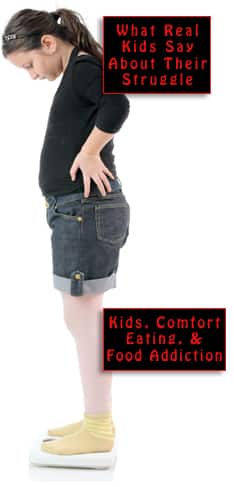
Quality of life comes in several varieties, and none of them can perform its magic if the person is depressed. Britain’s National Obesity Observatory (NOO) discovered that when an obese child is depressed that depression seems to increase as time goes on. If the family lives at or near poverty level, the effect is even worse. Their work resulted in a 28-page report titled “Obesity and mental health,” which Childhood Obesity News had talked about. (The same post mentioned a few other interesting studies, too.)
One of the Observatory’s conclusions about obese young people was that weight management programs can help, even though the benefit may not show up right away in the form of immediate weight loss.
This seems to reflect a profound truth. To experience an epiphany, followed by an instantaneous change in behavior, is not the human way. People mull things over. Ideas take a while to sink in. A person might hear the same idea from multiple sources for years, and it doesn’t make a dent. Then one day someone frames it in exactly the right words, and everything clicks.
For scientists to serve up immediate and exquisitely quantifiable results, seems hubristic, but they can’t be blamed for what might seem like unearned omniscience. The system they must operate in wants to see graphs and charts with crisp delineations. This is, after all, how funding is obtained.
For the clinician, interventions that challenge family tradition and wider culture may not resolve anything in the short term. It’s not exactly like waving a magic wand, and no primary care physician or therapist should ever feel inadequate if results are not immediately apparent. Who knows what might happen 10 years from now? It’s always “better late than never.”
The NOO report also confirmed that obesity can aggravate mental/emotional health that is already impaired, and vice versa. It goes both ways, and a vicious cycle can develop quickly. When two or more problems continually exacerbate each other, it’s called “spiraling out,” and it needs to be stopped.
An audacious experiment
In one post, Childhood Obesity News explored the official one-child policy that China pursued for some years. An awful lot of boys became obese, partly because parents and grandparents who enjoyed spoiling kids with junk food had fewer targets to concentrate their energies on. The Chinese childhood obesity epidemic led to brutal “fat camps” and deprogramming centers designed to cure internet addiction.
Peripherally related
In another post, Childhood Obesity News looked at the multi-generational, epidemiologically-oriented Framingham Heart Study. Data from this longitudinal study has been utilized in many different ways by numerous research teams. It was noticed that if a subject became obese during the study, their spouse or a sibling would become obese also, but the reasons are not clear and could be quite mundane.
It turns out that researchers used the Framingham Heart Study subjects’ information to zero in on the “quality of life” question, with a study called “Dynamic spread of happiness in a large social network.” They were interested in the idea of emotional contagion, how it works, and how far its reach extends. In defining nodes, ties, components, and clusters, they used the same kind of analysis that Facebook uses when deciding who is shown which advertisements.
These authors were not concentrating on weight an ingredient of happiness, but they did mention a couple of things known from previous studies:
Happiness spreads significantly more through same sex relationships than opposite sex relationships… This result also accords with previous evidence on sex effects in the spread of obesity and suggests that people might be more likely to take emotional cues from members of the same sex. The spread of happiness seems to reach up to three degrees of separation, just like the spread of obesity…
Your responses and feedback are welcome!
Source: “Obesity and mental health,” Khub.net, March 2011
Source: “Dynamic spread of happiness in a large social network: longitudinal analysis over 20 years in the Framingham Heart Study,” BMJ.com, 12/05/08
Photo via Visualhunt

 FAQs and Media Requests:
FAQs and Media Requests: 











